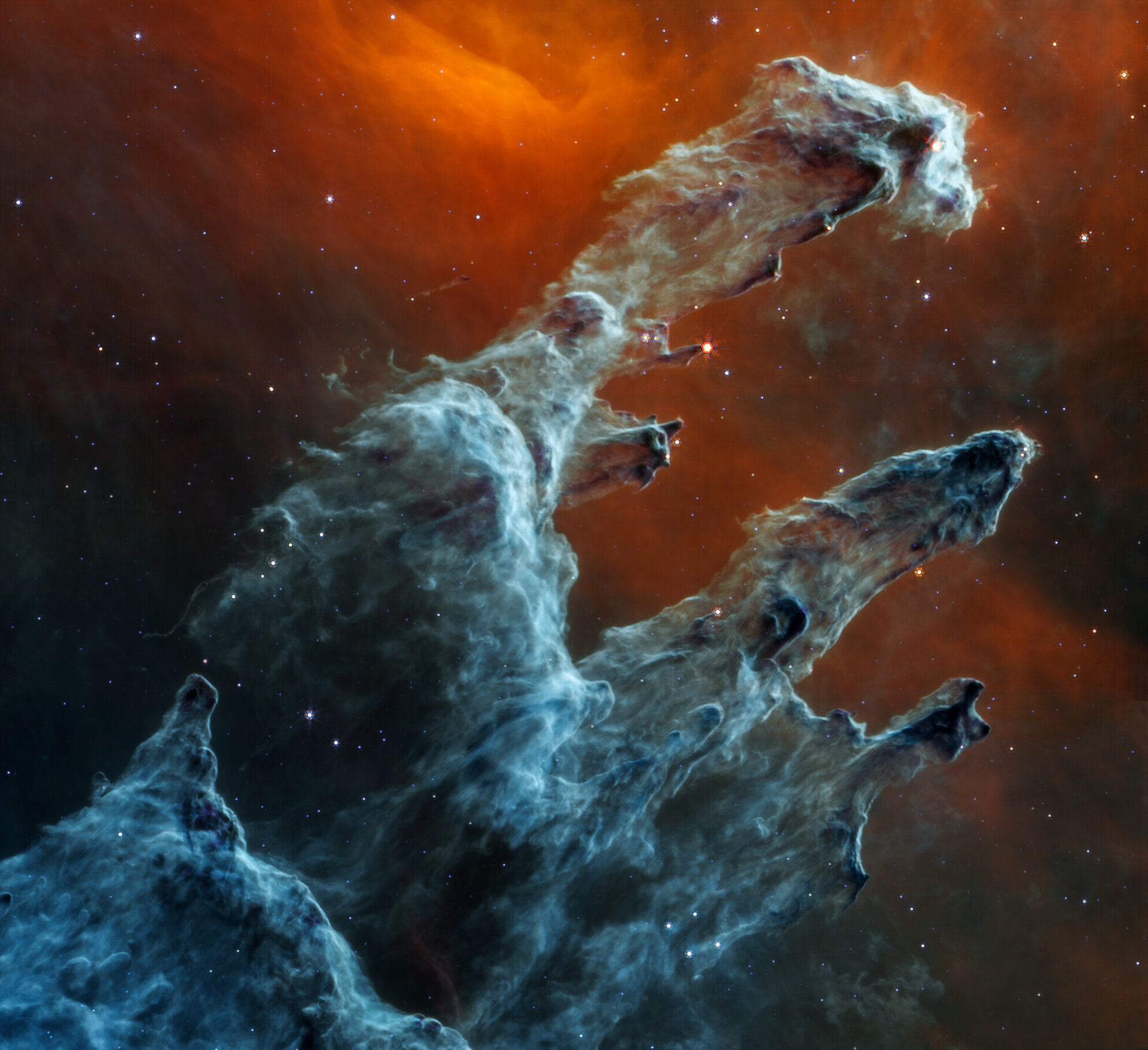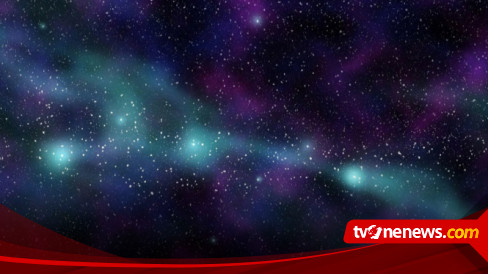This is not an ethereal landscape of forgotten tombs. Nor are these sooty fingers reaching out. These pillars, filled with gas and dust, “bury” stars that slowly form over many thousands of years. NASA / ESA / CSA’s James Webb Space Telescope has captured this eerie and extremely dusty image of the pillars of creation in mid-infrared light, a new look at a familiar landscape. Why does mid-infrared light evoke such a dark and chilling mood in Webb’s Mid-Infrared Instrument (MIRI) image? Interstellar dust covers the scene. And while mid-infrared light specializes in dust detail, stars at this wavelength aren’t bright enough to be visible. Instead, these looming columns of lead-colored gas and dust glow at the edges, betraying the activity within.
Thousands of stars have formed in this area. This becomes clear when looking at Webb’s recent Near-Infrared Camera (NIRCam) image of this object. Most of the stars are missing from the MIRI image. How come? Many newly formed stars are no longer surrounded by enough dust to be seen in mid-infrared light. MIRI can therefore only see the young stars who have not yet shed their mantle of dust. These are the crimson spheres on the edges of the pillars. Blue stars, on the other hand, are aging, which means they have lost most of their layers of gas and dust. Mid-infrared light excels at detecting gas and dust in minute detail. This is also unmistakably visible in the background. The densest areas of dust are the darkest shades of gray. The red area at the top, which forms a mysterious V, like an owl with outstretched wings, is where the dust is diffused and coolest. Note that no background galaxies are visible: the interstellar medium at the densest part of the Milky Way’s disk is too full of gas and dust for their distant light to pass through.
How vast is this landscape? Follow the upper pillar and land on the bright red star that sticks out like a broomstick. This star and its dust mantle are larger than our entire solar system. This scene was first photographed by NASA / ESA’s Hubble Space Telescope in 1995 and again in 2014, but many other world-class observatories have also thoroughly examined this area, such as ESA’s Herschel Telescope. Each advanced tool provides researchers with interesting new details about this region, which is practically overflowing with stars. With each observation, astronomers gain new information and, through their ongoing research, build a deeper understanding of this star-forming region. Each new wavelength of light and each new instrument provides ever more precise information about gas, dust and stars, allowing researchers to fine-tune their star formation models. Thanks to the new MIRI image, astronomers now have higher resolution mid-infrared data than ever before and will analyze much more accurate dust measurements to create a more complete three-dimensional landscape of this distant region.
Photos: NASA, ESA, CSA, STScI, J. DePasquale (STScI), A. Pagan (STScI)
The Pillars of Creation are located in the vast Eagle Nebula, which is 6,500 light years away.
Webb is the largest and most powerful telescope ever launched into space. Under an international cooperation agreement, ESA provided the telescope launch service, using the Ariane 5 launch vehicle. In collaboration with the partners, ESA was responsible for the development and qualification of the Ariane modifications. 5 for the Webb mission and the procurement of the launch service by Arianespace. ESA also supplied the NIRSpec spectrograph and 50% of the MIRI mid-infrared instrument, designed and built by a consortium of nationally funded European institutions (the MIRI European Consortium) in collaboration with JPL and the University of Arizona. . Webb is an international partnership between NASA, ESA and the Canadian Space Agency (CSA).
Bron: ESA


